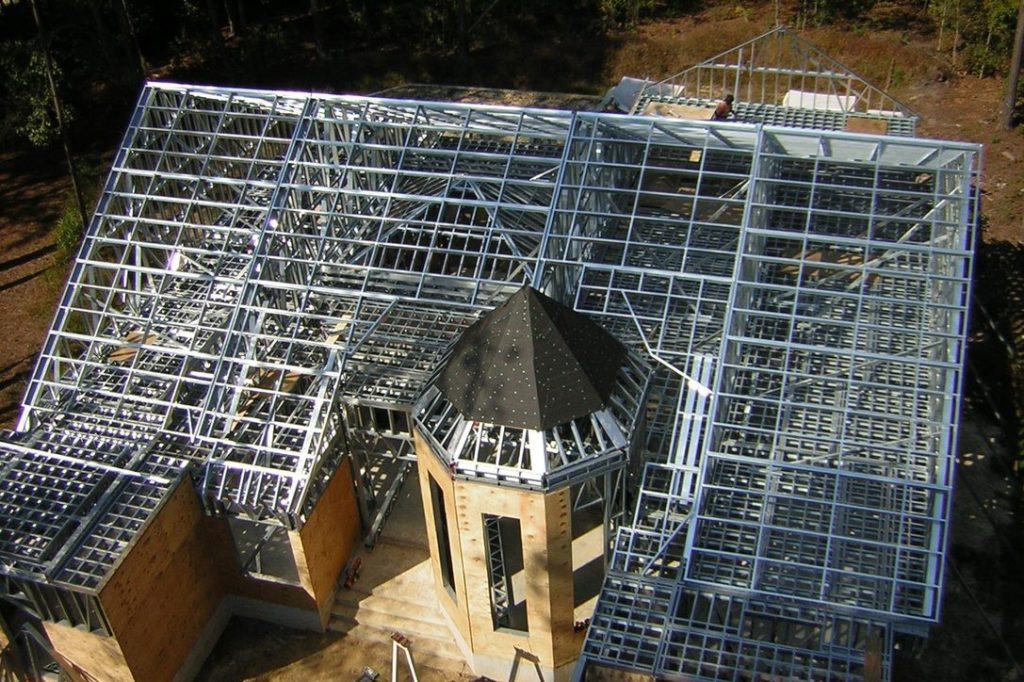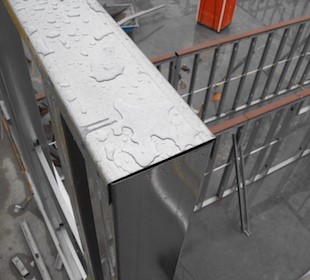
10 Reasons to Frame Your Next Project with Steel
Why is steel the best choice for framing your new home or building? This article by Steel Framing Industry Association lays out ten good reasons.
Choosing the right material to frame your next commercial project can significantly reduce costs while maintaining, or even improving, work quality and output. Cold-formed steel (CFS) framing has a proven track record of providing sustainable benefits for low and mid-rise buildings. It also offers significant cost benefits over competitive building materials. This is especially true when the total cost of construction is considered.
Why should building professionals consider CFS framing for their construction projects?
Advantages of Steel
Here are 10 advantages of steel cited by Construction Review Online:

CFS weighs 1/3 less than wood studs and has the dimensional stability to maintain its structural integrity over the long term — meaning it won’t settle or sag like other structural materials. Photo Credit: Ronsco, Inc
-
Durability
Steel is dimensionally stable and does not expand or contract with changes in moisture content. Steel will not warp, split, crack or creep when exposed to the elements.
- Wood or brick will swell when exposed to moisture
- Wood will warp, crack, chip, split and spall when it’s dried
- Concrete and concrete block will shrink and form shrinkage cracks
And, dimensional stability concerns are magnified when materials other than CFS are used in tall mid-rise buildings.
Free eBook: Strength in the Face of Disaster: How Cold-Formed Steel Framing Keeps Buildings Safe
-
High Tensile Strength
Steel has the highest strength-to-weight ratio of all structural framing materials, according to the Steel Framing Industry Association.
When CFS sheet is formed into a C-shape, like a stud or a joist, the folds act as stiffeners that increase the strength of the steel sheet dramatically. This gives CFS framing components a strength-to-weight ratio that is up to 7 times greater than that of dimensional lumber, for example.
Learn more: Specifying Cold-Formed Steel to Meet Project Goals

Through panelization, CFS studs, joists, and trusses can be delivered to building sites ready to assemble, with little to no waste. Photo Credit: Wall-tech
-
Time Efficient
Panelization — the ability to assemble wall, floor and roof sections off-site in a controlled environment — is frequently used in CFS framing projects. It has many advantages from speeding up construction to ensuring greater quality control.
Learn more: 6 Factors to Consider to Maximize the Benefits of Off-Site Construction
-
Cost Savings
CFS framing systems offer significant cost benefits over competitive building materials when the total cost of construction is considered.
See this recent study: The True Cost of Cold-Formed Steel v. Wood Framing
Free eBook: How Cold-Formed Steel Framing Solves Design Challenges for Architects
-
Non-Combustible
It’s a common fact that steel is non-combustible. Unlike a wood structure, steel-framed structure can help safeguard your assets against fire accidents.
- The melting point of steel is approximately 2,700 degrees Fahrenheit
- Building fire temperatures average 1,000 degrees Fahrenheit, and rarely exceed 1,800 degrees Fahrenheit
- Thus, the steel in structures will not melt
While the stiffness and yield strength of steel are reduced at ultra-high temperatures, modern building codes and fire protection methods take these reductions into account.
Learn more: Steel’s Fire Resistance

The durability of cold-formed steel, including its resistance to corrosion, mold, and vermin, gives it a longevity that few building materials can rival.
-
Longevity
CFS framing is impervious to the environmental factors that typically threaten the integrity, lifespan and stability of other framing materials. This is a major advantage of CFS.
- CFS is resistant to corrosion, mold and vermin
- CFS dimensional stability helps give it a longevity that few building materials can rival
Learn more: Building for Life: The Facts About Cold-Formed Steel & Durability
-
Less Maintenance
Steel-framed buildings provide lower maintenance and repair costs. How so?
- CFS framing resists rot, termites and moisture.
- CFS framing’s high quality and dimensional stability results in few warranty claims and call-backs
-
Pest Free
Termite infestation, sometimes called “the silent killer,” causes more harm to buildings in North America than fire, floods, and storms combined.
- Steel is an inorganic material
- Steel is not a desirable food source for termites
Thus, steel is arguably the best possible defense against a potentially catastrophic issue.
Learn more: One Simple Way to Save Billions of Dollars in Property Damage Caused by Termites and Dry Rot
-
Energy Conservation
Since 1990, the steel industry has reduced energy intensity per ton of steel produced by 31 percent and CO2 emissions by 36 percent per ton of steel shipped, According to the American Iron and Steel Institute.
Learn more: Infographic: Resiliency of Cold-Formed Steel Framing

CFS framing contains a minimum of 25% recycled steel and is continually and completely recyclable.
-
Sustainable
Construction is increasingly “going green.” Building owners, architects, engineers and contractors are looking for ways to construct buildings with low environmental impact. The most recycled material on the planet is steel.
Build your dream structure
Steel framing offers endless customization opportunities. You can construct your commercial building, using steel framing to achieve:
- Maximum usable space
- Unique aesthetic features
Simply describe your project goals and customization needs to a design expert. They will provide a structure to fit your request.
As far as industrial construction goes, 95% of projects are now made from steel, according to Construction Review Online. Technology has evolved, and steel-framed buildings are part of the mainstream.
See the infographic: The True Sustainability of Steel in Numbers
Want to learn more? Contact us today!
- By: marketing
- 0 comment


